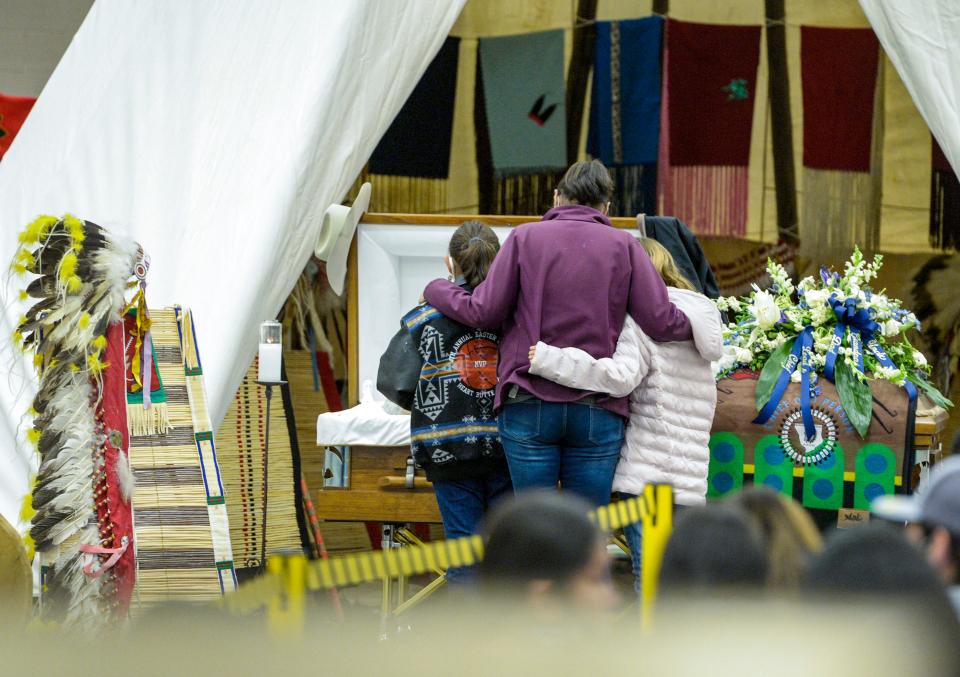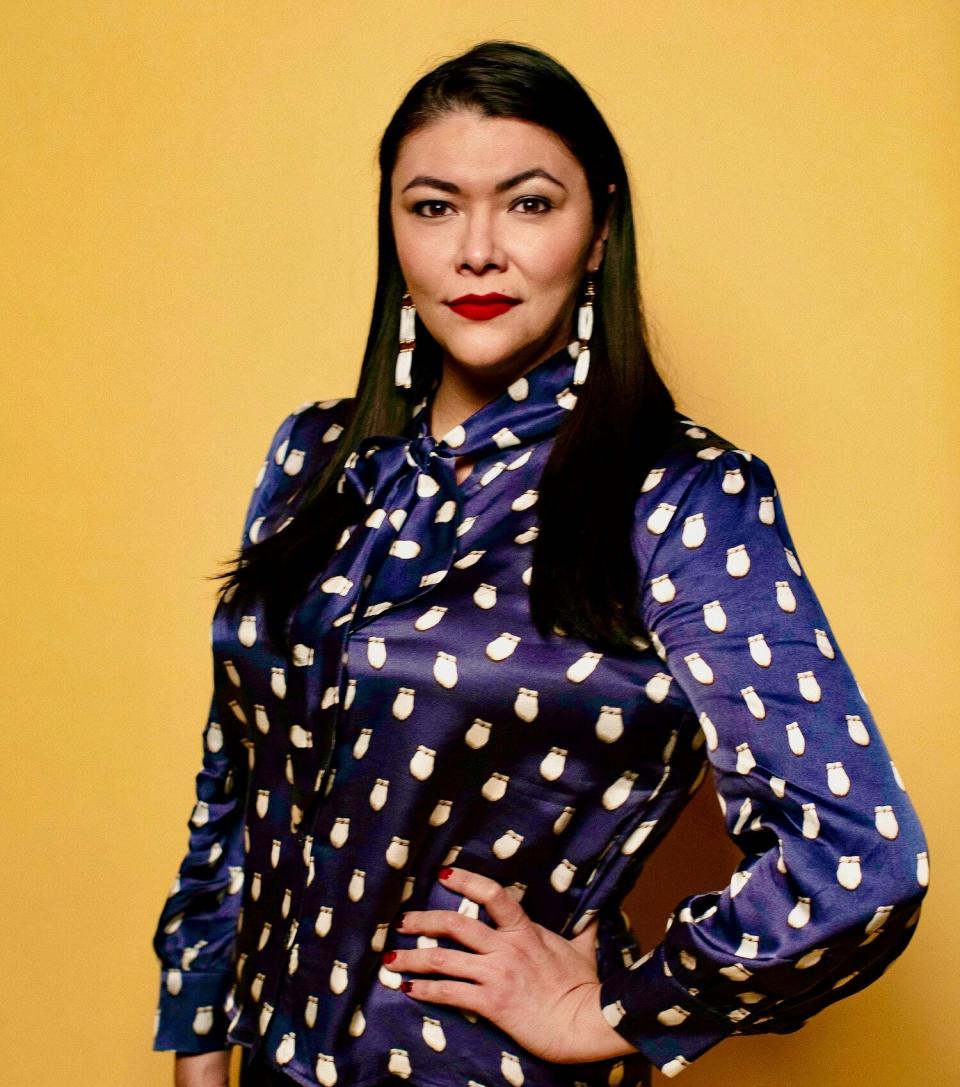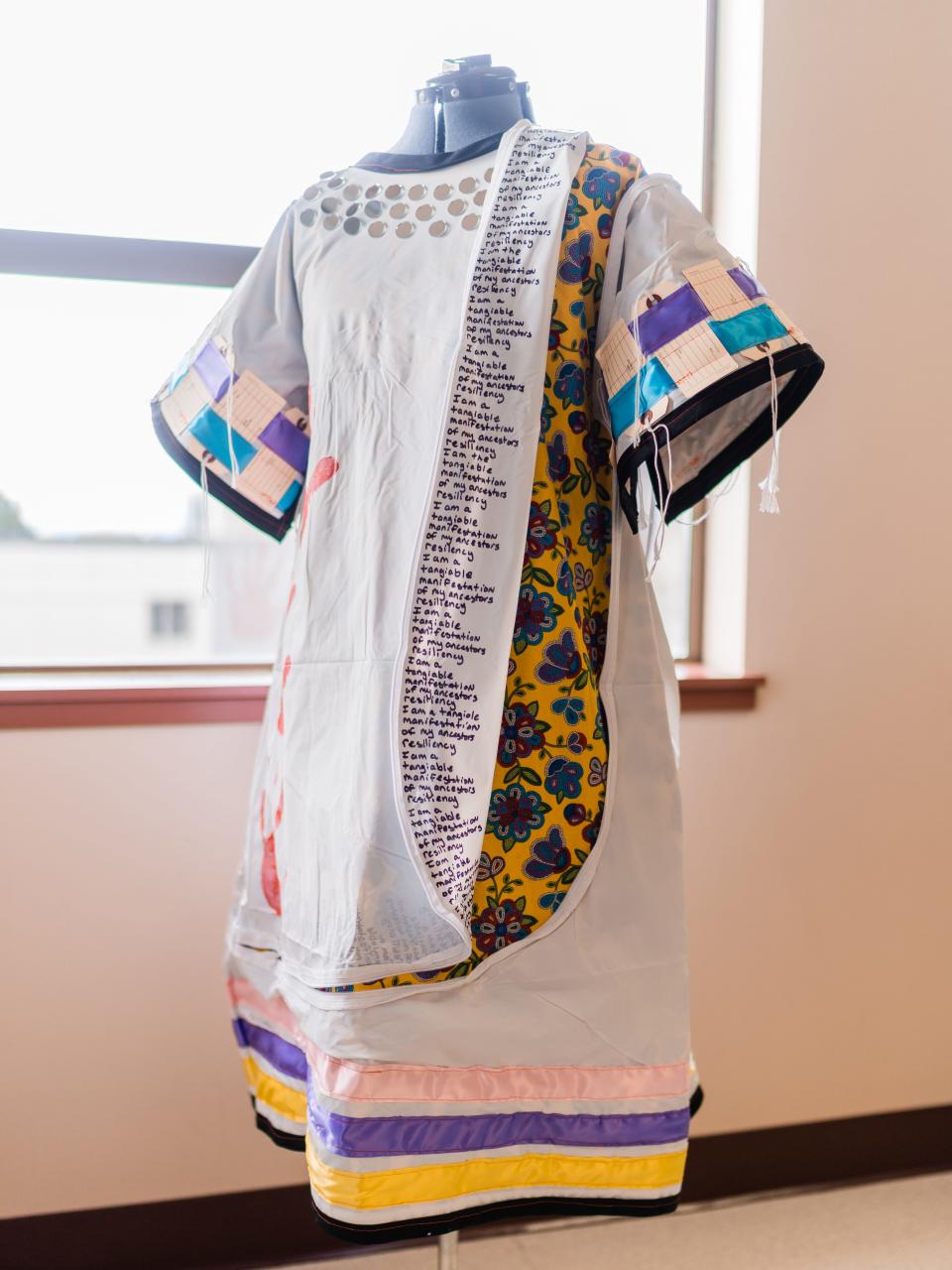Native Americans die younger, CDC study shows. They say it's proof of 'ongoing systemic harm.'
When she was in kindergarten, Erica Littlewolf of the Northern Cheyenne Tribe remembers several of her fellow Native friends were already losing their parents.
Then she started losing those friends and classmates.
“Pretty much by high school, I had lost a big portion of my friends," said Littlewolf, adding she was startled to learn some of her white friends weren't also going to funerals.
A recent study confirmed Native Americans have lower life expectancies compared to other racial groups. For years, American Indian and Alaska Native people have been misclassified in death records, leading to significant underestimation of death rates and life expectancy.
But the Centers for Disease Control and Prevention study released this month using 2019 data reports it is the first comprehensive, national mortality assessment of the population.
Long drives and limited options: Indigenous women with breast cancer face harsh reality
The study confirmed previous analyses and expanded on them, finding lower life expectancies for American Indian and Alaska Native people compared to white, Black and Hispanic people. The findings paint a grim picture that's no surprise to Native Americans, who have seen too many lives cut short throughout their communities.
A product of historical traumas, including genocide, colonization and forced removal and assimilation by the U.S. government, the disparities are a reality that echo throughout Indian Country.
Overall, Native people had a life expectancy of 71 years, compared to Hispanic life expectancy of almost 82 years, whites at 78.8 years, and Blacks at 74.8 years, the study found.
Heart disease was the leading cause of death for Native people that year, followed by cancer, accidents, chronic liver disease, and cirrhosis and chronic respiratory diseases. Natives were also killed at five times the rate of white people, half the rate of Black people and more than twice the rate of Hispanic people.

Overall, Native men and boys had the lowest life expectancy at around 68 years, according to the study. That's a decade less than Hispanics, 7.7 years less than whites, and 2.7 years less than Blacks.
Native women and girls lived longer than males, around 74 years – but still significantly less than others: Their life expectancy was 9.4 years less than Hispanics, 6.3 years less than whites, and around 3 years less than Blacks.
Native babies were also more likely to die. Infant death among Natives under one year was highest compared to the other races, according to the analysis.
“There are other questions we need to be asking that really start to dig at the colonial underpinnings of indigeneity,” said Desi Small-Rodriguez, a University of California, Los Angeles demographer who is Northern Cheyenne and Chicana.
She directs the Data Warriors lab, which studies Indigenous social sciences, and cofounded the Indigenous Data Sovereignty Network that aims to ensure data usage for the betterment of Native peoples.
We all have a unique perspective: Sign up for This is America, a weekly take on the news from reporters from a range of backgrounds and experiences

In the last year alone, Small-Rodriguez, who grew up on the Northern Cheyenne Reservation in Montana, lost five classmates – all women between 25 and 44 – to cirrhosis. One had also lost her husband to cirrhosis before the age of 40, she said. Each left behind children.
“It makes me sad. These numbers, these are my relatives,” she said. “You start thinking about all the other ones. These are people I went to high school with, I played basketball against or with, went to prom with… they’re in your life, and then they’re not.”
Many states don’t consistently track tribal data on death certificates, making individual tribes’ life expectancy hard to estimate.
“I would bet my bottom dollar that in our communities, that number is actually lower,” she said. “We can now say we have a life expectancy for Indians in this country – in 2021, we finally have it... But it does speak to the extensive erasure, the persistent erasure, of Indigenous peoples in this country.”
'He will never be replaced': Blackfeet Chief Earl Old Person, the longest-serving elected tribal official in US, dies at 92
Health advocate Margaret Moss, a nursing professor at the University of British Columbia, dedicated her career to studying Native health disparities. She also saw the ill effects of assimilation and disinvestment: Born before the Indian Child Welfare Act that aimed to keep American Indian foster children with their own people, Moss was adopted into a white household and moved to the Washington, D.C., area.
She grew up with two other Native children. Her sister by adoption died at 50, and her brother at 45. A brother from her original family died at 35 of an accident, a top cause of death for American Indians.
"If the numbers are glossed over, that relieves the system," said Moss, a member of the Mandan, Hidatsa, and Arikara Nation, the Three Affiliated Tribes of North Dakota and author of the textbook American Indian Health and Nursing.

A 2017 tribal report found men of her tribe had a life expectancy of around 51 years old, and women, 58.
Littlewolf also grew up on the small Northern Cheyenne Reservation, which was hard-hit by COVID-19.
Last July, Littlewolf’s brother Jay died of a heart attack. He was in his early 60s. “I’m still in denial,” she said. The week after he died, she got a card he'd sent her in the mail. “I’m starting to understand as the seasons change and, like, ‘Oh, he hasn’t stopped by.’”
Earlier this year, Littlewolf celebrated her 40th birthday – but not until the day after.
“When you see people dying at such young ages, it's hard to fathom even growing to be that old, because you don't even know what it looks like,” she said. "I never thought I'd make it to 40... I don't want to celebrate my birthday on my birthday, just in case I die on that day. I have to wait until the day after, just to make sure I make it to that age."
At least 140K U.S. children have lost caregivers to COVID-19: Children of color have taken the brunt of it.
Littlewolf emphasized the impact historical traumas are still having on her communities.
“The ongoing, systemic harm,” she said. “This is what it looks like, when colonization happens over a long period of time: 500, 600, years. This is what you get. It’s the long-term effects… the accumulation of bad policies, bad food and all these different things that make us sick.”
Through her work with an Indigenous restorative justice program at Mennonite Central Committee, Littlewolf said she is trying to address systemic issues by working with individuals and communities to "do a lot of the healing work that is necessary."
The grief and mourning she's endured, she said, are teachers.
"The work that I tend to do is more focused, like the bottom of the tree... by holding systems accountable," she said. "You still have today, I still have that gift of life. I still have that breath of life in me. And, so, what is my responsibility to the whole?"
Reach Nada Hassanein at nhassanein@usatoday.com or on Twitter @nhassanein_.
This article originally appeared on USA TODAY: Life expectancy for Native Americans lower than other races: CDC study

